Origin of the Pogo
By:
June 22, 2011

According to the Internet, the pogo — a dance in which the object is to jump up and down in place, torso stiff, arms rigid, legs close together — was invented in 1976 by Sid Vicious. Vicious told Sex Pistols’ chronicler Julien Temple that he’d invented the dance as a way to attack non-punks who came to punk shows. The Pogues’ Shane MacGowan has backed up Vicious’s claim, asserting that a leather poncho which Vicious wore to gigs prevented him from any other form of dancing except jumping up and down.
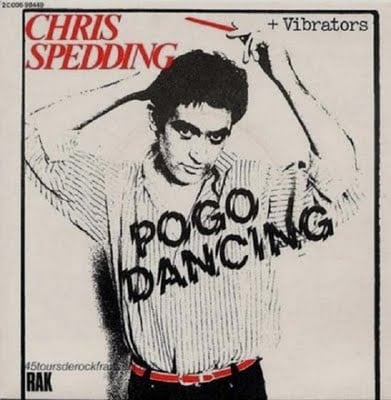
Leather poncho — ha! Vicious and MacGowan were obviously taking the piss. Though it began as a joke, no one has ever corrected the Vicious-invented-the-pogo meme, which continues to metastasize.
HILOBROW has mentioned the dance in connection with Vicious, too — though skeptically. As of today, however, we will dispel this shibboleth once and for all.
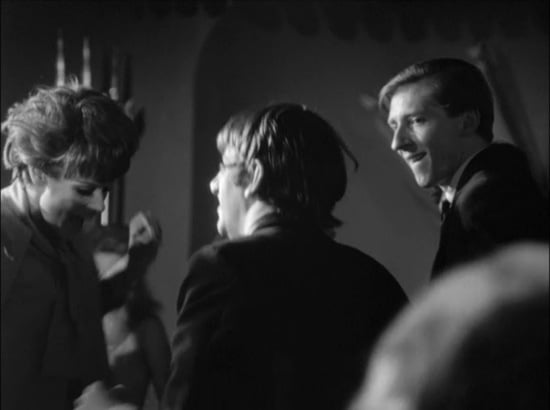
The pogo is an arrow that was first added to the quiver of young, anarchic British dancers not in 1976 but in 1964, the first year of the Sixties (1964-73). The origins of the dance can be spotted in Richard Lester’s Beatles pseudo-documentary, A Hard Day’s Night, filmed and released that year. In a scene set at London’s fictional Cirque Club (actually Les Ambassadeurs), Ringo Starr is drawn across the dance floor (at 22:59, shown above) into the orbit of a friendly, gawky, deeply unhip-looking fellow in his late 30s.
Starr has only one dance move in his repertoire — a rope-a-dope arm exercise that Paul McCartney mocks at 21:43 [today’s version: the dice-shaking-and-rolling move, mocked in the movie Knocked Up] — and he’s noticed that the older fellow is an equally awkward but much more imaginative dancer. “I’ll show you mine if you show me yours,” he silently signals.
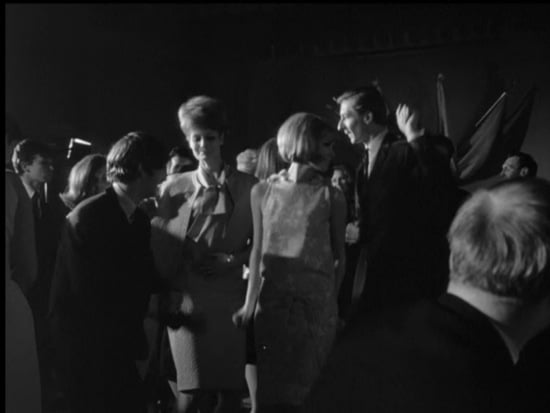
The older dancer — who from 22:42-48 can be seen closely studying, and sometimes imitating, the other dancers, with lip-biting concentration — has never been identified; Beatles scholars have tended to assume that he was an extra who happened to be at Les Ambassadeurs that evening. HILOBROW’s research department has determined conclusively that the older dancer was actually the pioneering social anthropologist Clifford Geertz, then on staff at the University of Chicago! He was 37 when he was filmed by Lester.
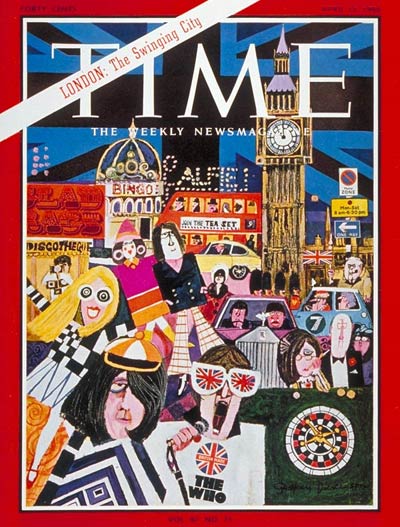
Geertz was at that very moment developing his influential theory of “symbolic anthropology,” which regards culture as “a system of inherited conceptions expressed in symbolic forms by means of which people communicate, perpetuate, and develop their knowledge about and attitudes toward life” (The Interpretation of Cultures, 1973). Geertz argued that the role of anthropologists was to interpret the guiding symbols of each culture; long before Dick Hebdige’s Geertz-influenced Subculture: The Meaning of Style (1979), in A Hard Day’s Night we catch a glimpse of Geertz practicing what he preached — by studying the mating rituals of Swinging London.
Leave it to Geertz — who in 1964 published an essay on “Ideology as a Cultural System,” in Ideology and Discontent (ed. David Apter) — to find his way onto the same dancefloor as the Beatles. One wonders why he never published on the topic — too far ahead of his time?

In the above-mentioned essay, Geertz notes that the question of the social sciences’ objectivity was then being hotly debated in academe. “Claims to impartiality have been advanced in the name of disciplined adherence to impersonal research procedures of the academic man’s institutional insulation from the immediate concerns of the day and his vocational commitment to neutrality, and of deliberately cultivated awareness of and correction for one’s own biases and interests,” Geertz notes with obvious distaste. There was nothing impersonal or neutral about Geertz’s research methods, as can be seen first-hand in A Hard Day’s Night; however, Geertz cautioned his fellow social scientists that biased, partisan subjectivity wasn’t the only alternative. “An attitude at once critical [objective] and apologetic [subjective] toward the same situation is no intrinsic contradiction in terms (however often it may in fact turn out to be an empirical one) but a sign of a certain level of intellectual sophistication,” he concludes.
Geertz (a member of the Postmodernist Generation) would revisit this theme in his 1988 treatise, Works and Lives: The Anthropologist as Author, which revisits important anthropological works by Claude Levi-Strauss, Edward Evans-Pritchard, Bronislaw Malinowski, and others, and deconstructs the literary means by which they shrouded their findings in an aura of (semi-bogus) objectivity. It’s in keeping with Geertz’s negative-dialectical epistemology that he’d be fascinated by the making of a pseudo-documentary — to the point of traveling to London in order to be an extra in one of its scenes.
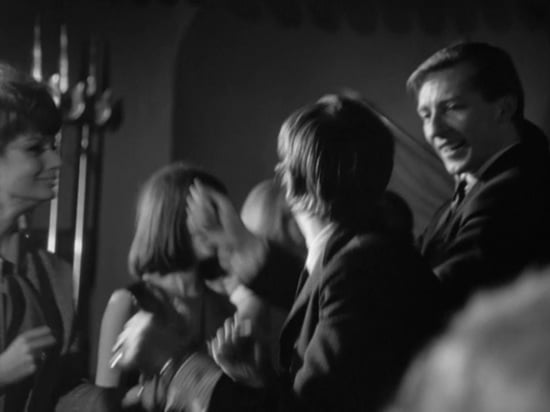
In the A Hard Day’s Night scene parsed here, Geertz enthusiastically imitates Starr’s rope-a-dope dance move. He’s researching, learning by doing — as he’d done so many times before in the field. In 1958, for example, we read in Geertz’s well-known essay “Deep Play: Notes on Balinese Cockfighting,” he and his wife, the anthropologist Hildred Geertz (the tall, lovely Ingrid-Schorr-esque woman seen dancing with Geertz and Starr, thus provoking McCartney’s jealousy) attended an illegal cockfight in a remote Balinese village… which led to their arrest in a vice raid. His stuffy, objectivity-mongering colleagues would never have placed themselves in such a predicament, Geertz notes unapologetically:
It was the turning point so far as our relationship to the community was concerned, and we were quite literally “in.” The whole village opened up to us, probably more than it ever would have otherwise … and certainly very much faster. Getting caught, or almost caught, in a vice raid is perhaps not a very generalizable recipe for achieving that mysterious necessity of anthropological field work, rapport, but for me it worked very well. It led to a sudden and unusually complete acceptance into a society extremely difficult for outsiders to penetrate.
It gave me the kind of immediate, inside view grasp of an aspect of “peasant mentality” that anthropologists not fortunate enough to flee headlong with their subjects from armed authorities normally do not get. And, perhaps most important of all, for the other things might have come in other ways, it put me very quickly on to a combination emotional explosion, status war, and philosophical drama of central significance to the society whose inner nature I desired to understand.
So much for “the academic man’s institutional insulation from the immediate concerns of the day.” Geertz believes in getting your hands dirty, shaking your tailfeathers — and he didn’t have to be the genius he was to recognize that the Beatles phenomenon would provide unprecedented insight into the emotional explosion, status war, and philosophical drama of the emergent era (that is, the Sixties).
At 23:09, we can see Geertz take a postmodernist leap (literally) when he transitions from observing to demonstrating. At Ringo’s urging, Geertz teaches the younger man a new dance move. However, Lester cuts away at that precise moment, obscuring the move. What was it?
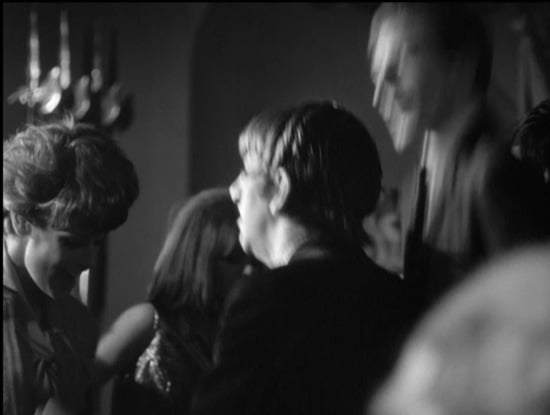
At 23:12, Lester cuts back to Clifford, Ringo, and Hildred. They seem to have resumed doing the rope-a-dope — did we miss Geertz’s move? No! At 23:15.5, Geertz does it again.
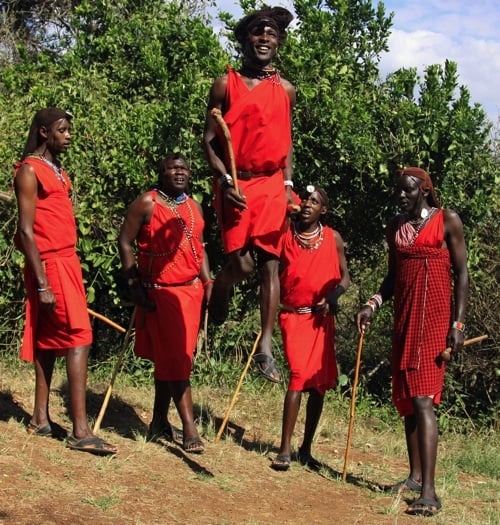
Torso stiff, arms rigid, legs close together, Geertz demonstrates to the gathered crowd how to do the adumu — the Masai warrior “jumping dance,” known to few outside Kenya and northern Tanzania at that time… except, naturally, for anthropologists like the Geertzes.
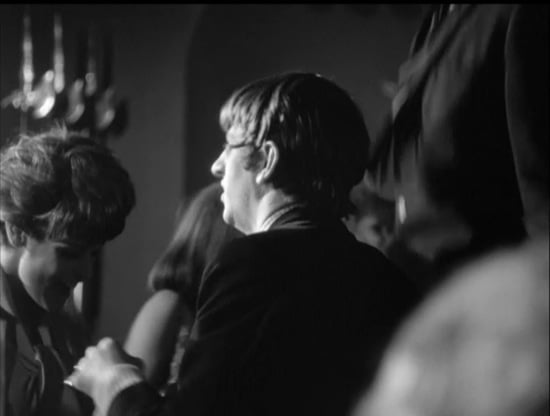
Perhaps Geertz had read about the dance in Robert F. Gray’s 1963 study, The Sonjo of Tanganyika [International African Institute/Oxford University Press], in which we read that the Sonjo/Batemi people who live within Maasai territory perform “a competitive dance called gikhoji in which the object is to jump as high as possible without perceptibly bending the knees. The Sonjo claim to surpass the Masai in this jumping dance.”
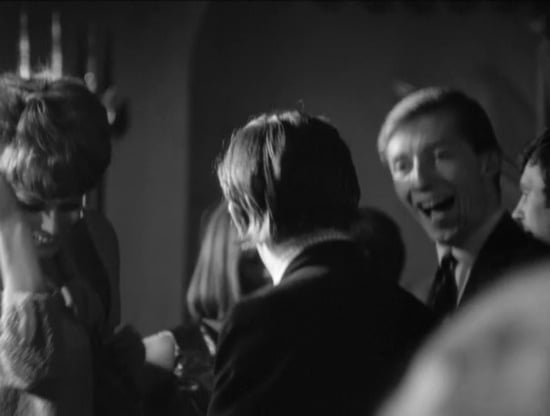
Or, much more likely, Geertz read about the adumu in Joost A.M. Meerloo’s 1959 treatise, Dance Craze and the Sacred Dance, which had cheekily and presciently compared rock’n’roll dancing to ritual dancing of so-called primitive peoples.
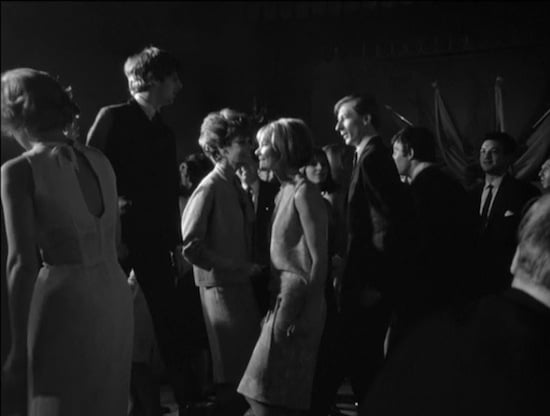
Meerloo, who — like Geertz — was deeply interested in ideology — briefly mentions the Masai dance whose “vertical movement serves to imitate the jumping and grunting of the lion to be caught. The men bounce up and down and jump themselves into an ecstatic temerity.”
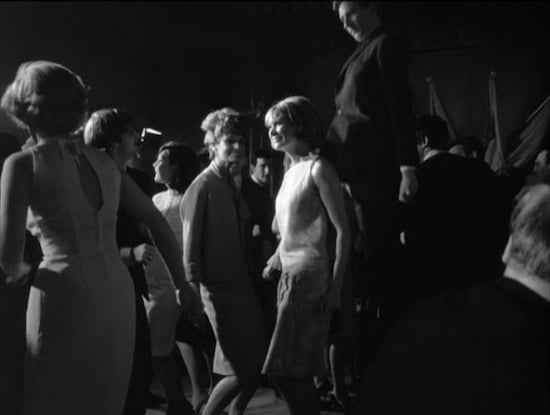
“Ecstatic temerity” — like Geertz’s “attitude at once critical and apologetic toward the same situation,” the dance introduced via this movie to British youth is not (pace the nobrow Sid Vicious) merely negative. The pogo/adumu is a negative-dialectical dance. And it wasn’t invented by punks. Now you know!
PS: Punks didn’t even invent punk.
MORE FURSHLUGGINER THEORIES BY JOSH GLENN: TAKING THE MICKEY (series) | KLAATU YOU (series intro) | We Are Iron Man! | And We Lived Beneath the Waves | Is It A Chamber Pot? | I’d Like to Force the World to Sing | The Argonaut Folly | The Perfect Flâneur | The Twentieth Day of January | The Dark Side of Scrabble | The YHWH Virus | Boston (Stalker) Rock | The Sweetest Hangover | The Vibe of Dr. Strange | CONVOY YOUR ENTHUSIASM (series intro) | Tyger! Tyger! | Star Wars Semiotics | The Original Stooge | Fake Authenticity | Camp, Kitsch & Cheese | Stallone vs. Eros | The UNCLE Hypothesis | Icon Game | Meet the Semionauts | The Abductive Method | Semionauts at Work | Origin of the Pogo | The Black Iron Prison | Blue Krishma! | Big Mal Lives! | Schmoozitsu | You Down with VCP? | Calvin Peeing Meme | Daniel Clowes: Against Groovy | The Zine Revolution (series) | Best Adventure Novels (series) | Debating in a Vacuum (notes on the Kirk-Spock-McCoy triad) | Pluperfect PDA (series) | Double Exposure (series) | Fitting Shoes (series) | Cthulhuwatch (series) | Shocking Blocking (series) | Quatschwatch (series)
READ MORE essays by Joshua Glenn, originally published in: THE BAFFLER | BOSTON GLOBE IDEAS | BRAINIAC | CABINET | FEED | HERMENAUT | HILOBROW | HILOBROW: GENERATIONS | HILOBROW: RADIUM AGE SCIENCE FICTION | HILOBROW: SHOCKING BLOCKING | THE IDLER | IO9 | N+1 | NEW YORK TIMES BOOK REVIEW | SEMIONAUT | SLATE
